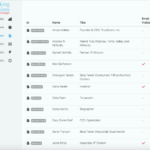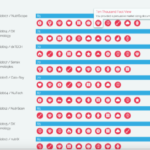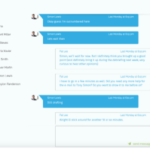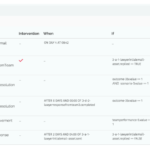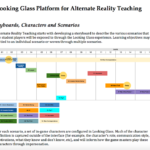UPenn’s Digital Simulation Platform
Real world experiences in a game-like setting
It’s always challenging to connect classroom learning with real-world experience. But the University of Pennsylvania’s Wharton School has come up with a promising approach…using the latest technology to create a truly authentic scenario that can be customized to blend theory with practice.
Workplace internships offer a great way for students to practice what they are learning. Universities must assess the extent to which the experience supports the coursework. Working with a team of designers, programmers, and technologists, Professor Ethan Mollick at the Wharton School built “Looking Glass,” a digital simulation platform, driven by a story engine that can quickly create an Alternate Reality Teaching, or ART, experience.
Using a powerful scenario editor and game master interface, this ART system makes it easy to develop just about any workplace environment, while customizing it to support classroom instruction by adding appropriate settings, tasks, and challenges. Likewise, Looking Glass has embedded high-tech reporting and feedback capabilities to capture plenty of student assessment data. And there is a badge system and leader board that add an additional dimension to help promote engagement and drive competition.
Once a virtual scenario is developed, students can experience the real world of work, by interacting with true-to- life avatars as well as with each other. And in moving through this scenario, they frequently encounter authentic problems that can only be solved by applying the theories and skills they have learned in the classroom.
For example, ART has transformed how the Wharton School teaches entrepreneurship to MBA students by creating a simulation grounded in an accurate depiction around what it’s like to build a startup company which correlates to some twenty-four course learning objectives.
By taking on the role of entrepreneurs, these students deal with any number of real-life scenarios, including legal issues, strategic planning, personnel decisions, and marketing challenges.
Thus far, Looking Glass is working extremely well for the students it serves.
So what’s next on Wharton’s innovation horizon? To make ART scalable for the masses while exploring how this approach might revolutionize MOOC instruction.
Many institutions find it difficult to tie classroom learning to real-world experiences. Lectures and case studies can serve to teach concepts but students often have no way to put ideas into practice. Internships can address this need but aren’t always feasible to provide, particularly on a massive scale.
The Wharton School of The University of Pennsylvania looked for a way to deliver an alternative realistic virtual experience, one that could play out over an extended period of time. Their goal was to enable experiential learning where students could put theory into practice tying together the full set of skills learned in the classroom.
Professor Ethan Mollick worked tirelessly with a team of designers, technologist and programmers to develop characters, companies, storyboards, and supporting websites to create a platform and story engine called Looking Glass. It was crafted to give instructors the ability to easily create a highly customizable shared environment. With this new Alternate Reality Teaching (ART) environment, students put ideas from cases and lectures into practice as scenarios play out over the course of weeks or months.
Game-like Digital Simulation Platform
Using ART, any scenario can quickly be created and managed. . A powerful scenario editor and game master interface makes it easy to run a game and create a scenario that cuts across classes, programs and even regions. The ability to create avatars and use aliases drives engagement while a badge system and leaderboard drives competition. 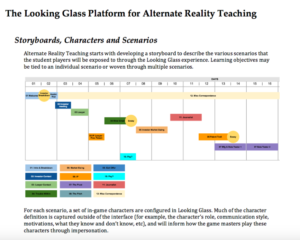
Students form teams, without assigned roles, and react to a scenario being played in real time using typical workplace tools such as email, video chat, file sharing, and instant messaging. These tools are monitored and controlled by the ART system. The students interact with each other and non-player characters (NPCs) as they make decisions and encounter obstacles. The system has built-in reporting and feedback capabilities and captures data that can be used for academic research.
Unlike traditional real-world experiences like internships, using ART enables a controlled environment to ensure that student learning correlates directly to the course work.
Moving from Theory to Practice with Alternate Reality Teaching
Students interact with non-player characters and each other to solve theoretical problems designed in a “work like: simulation. The platform allows instructors to create situations that require them to apply knowledge learning in class. Adding tasks and obstacles heightens the experience.
One example is a simulation built for their MBA program focusing on entrepreneurship. Designed around a startup company scenario, students are placed in the role where the founder that hired them mysteriously quits. Over a three-week period, the students are thrust into a variety of situations from dealing with legal issues to strategically growing the company in a highly competitive emerging market.
Students interact with non-player characters and other students and learn in a realistic manner what happens when applying theories learned. Multiple learning objectives from the course work are accomplished and teachers are able to add comments outside of the game and facilitate a post-game discussion
Alternative Reality Teaching Expands
University of Pennsylvania is now developing ART to make it scalable for the masses enabling its use in MOOC instruction.


